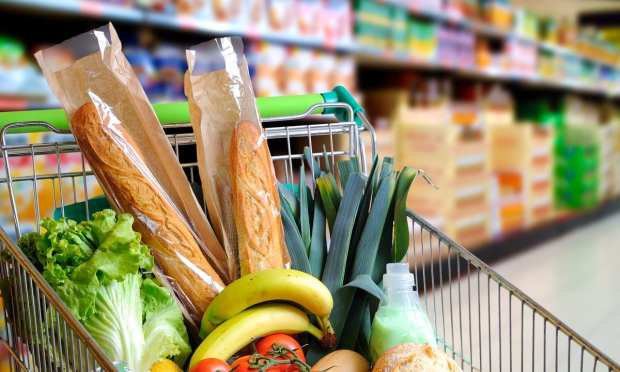Grocery Roundup: Goodbye, Amazon Go Grocery

Amazon Go Grocery is Amazon going, going, gone. The format, which launched in early 2020 as a grocery offshoot of the Amazon Go convenience store chain, included two stores, both in Washington state. One, in Redmond Washington, will be permanently closed, while the other, in Seattle, will be incorporated into the Amazon Fresh grocery store brand, Geekwire reports. An Amazon spokesperson told Progressive Grocer that this change is being made “to simplify the experience for our customers.”
The Amazon Go Grocery brand touted its fresh produce, ready-to-eat meals and baked goods from local businesses, using the Amazon Go Just Walk Out technology to allow consumers to make their purchases without a checkout stop. Now that Amazon Fresh is incorporating Just Walk Out technology, in addition to the Dash Carts already in use at Fresh stores, the two grocery brands did not have much setting them apart, other than the fact that the Go Grocery stores were smaller than their Fresh counterparts.
Now, rather than operating three separate grocery chains — Whole Foods Market, Amazon Go Grocery, and Amazon Fresh — the company will only have the two in addition to the convenience store chain.
While this consolidation is under way, Amazon Fresh is also gearing up for its East Coast debut with its upcoming Washington, D.C. opening on May 27.
Oatly Goes Public At $13.1 Billion Valuation
Sweden-based oat milk company Oatly went public Thursday (May 20), with shares priced at $22.12 bringing the company’s valuation to $13.1 billion, more than 30 percent higher than the initial public offering (IPO) price, reports CNBC.
The IPO came after a remarkably strong couple of years for the company, with its revenue more than doubling in 2020 to $421.4 million, despite a net loss of $60.4 million to expand into new markets and to generate awareness. Sure enough, people are aware — in fact, the beverage’s investors include a number of celebrities including Oprah Winfrey, Natalie Portman and, Yahoo Finance reports, Jay-Z.
Oatly’s messaging centers the beverage’s health benefits and its sustainability targets and focus on its meeting of environmental, social and corporate governance (ESG) standards.
“Long term, [the IPO is] an opportunity for us to create a fantastic shareholder base. So E.S.G. was definitely a huge, huge part of it,” Oatly Chief Executive Officer Toni Petersson told The New York Times.
The newly public company remains focused on growing and expanding, rather than becoming immediately profitable, Petersson told the publication. He explained, “This is about gaining market share. This is about leading a movement forward.”
NGA Rebrand Spotlights Independents
The National Grocers Association (NGA) announced Wednesday (May 19) its first rebranding since the group’s inception in 1982. The rebrand, in addition to modernizing the organization’s logo, also features a new tag line: “At the Heart of the Community.” The line is meant to emphasize the role independent grocers play in their local communities.
“NGA’s new logo and imagery, and updated messaging, deliver a fresh look and reinforces our mission: to ensure independent, community-focused retailers and wholesalers have the opportunity to succeed and better serve consumers through our policies, advocacy, programs and services,” Greg Ferrara, NGA President and Chief Executive Officer said in a statement. “By advocating for the growth and continuing innovation of these independent business leaders, we help bring choice, convenience and value to hard-working Americans, and ensure ongoing economic advancement and prosperity for our country.”
The group, a national trade association that advocates for independent retail and wholesale grocers, represents businesses “in every congressional district across the country.” The emphasis that this rebranding places on community centers independent grocers’ role as we begin to see the way to the post-pandemic, post-isolation future, with many now looking to reengage with their neighbors and reform a sense of connection.
H-E-B Drops Pickup Fee To Drive eCommerce Sales
Major Texas grocer H-E-B is dropping its curbside pickup fee for orders over $35, the company announced Monday (May 17). Previously, the grocer charged a $4.95 fee per order. Now, a smaller fee, $2.95, will be charged for orders that do not make the $35 threshold.
The announcement comes as many grocers look for ways to retain their share of consumers’ online grocery spending even as contagion concerns subside, and consumers feel safer returning to their pre-pandemic shopping habits.
“H-E-B can’t afford to charge customers for services that its competitors are offering for free,” Carol Spieckerman, president of retail insights firm Spieckerman Retail, told Grocery Dive. “H-E-B was wise to remove barriers to onboarding new customers.”
Still, the curbside pickup channel adds significant costs for the grocer, requiring the company to hire in-store shoppers at each location. While this allows the grocer to avoid the costs of using a third-party picking service such as Instacart, offering the service for free could nonetheless place economic strain on the grocer’s curbside pickup model.
